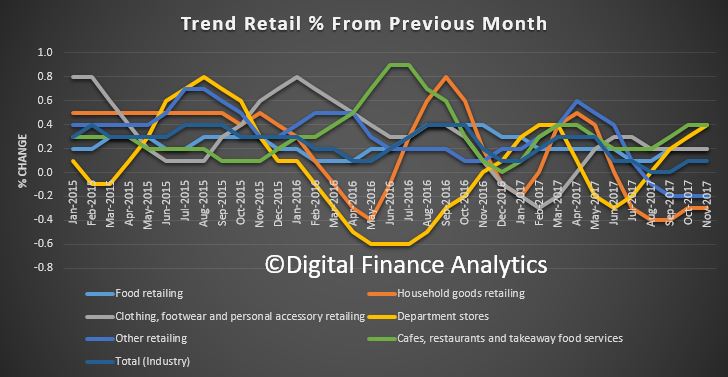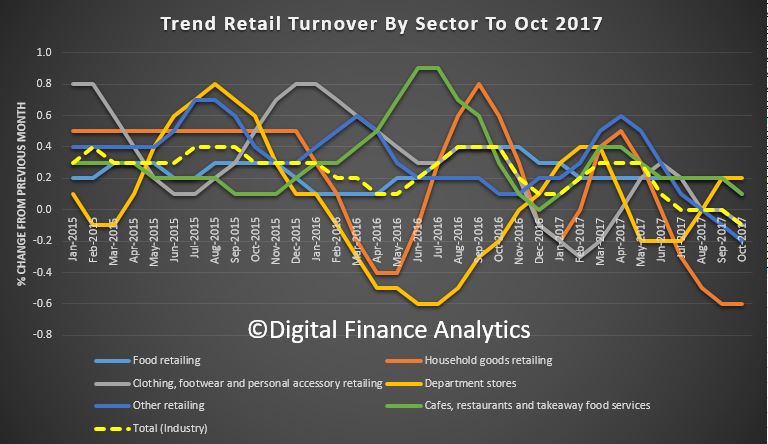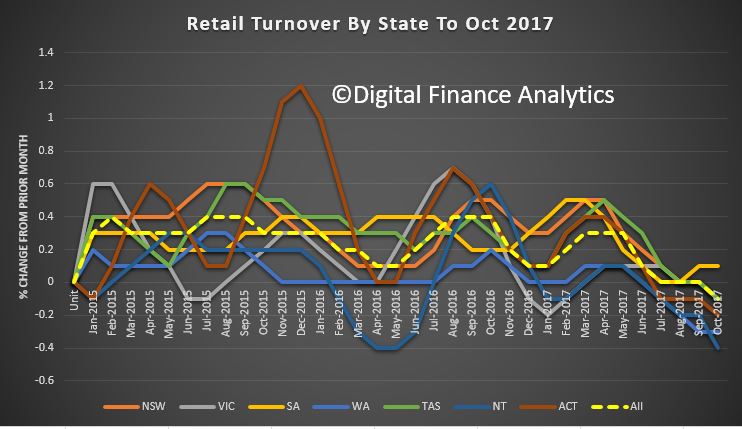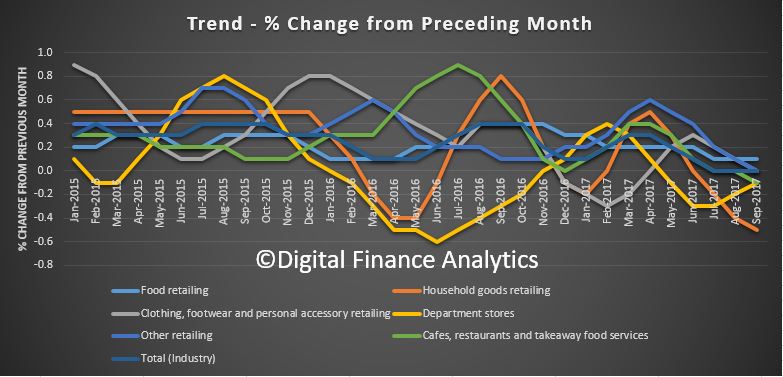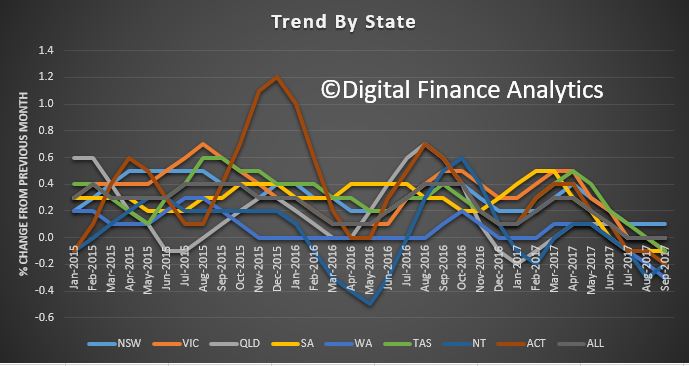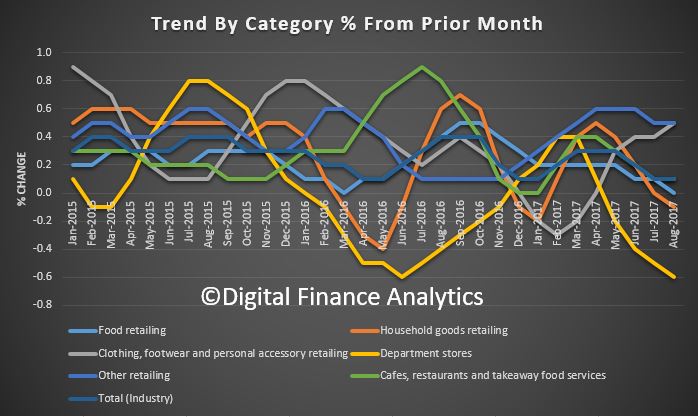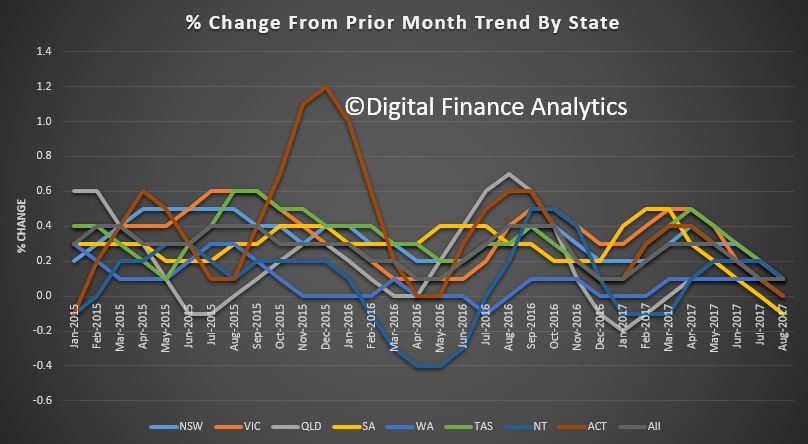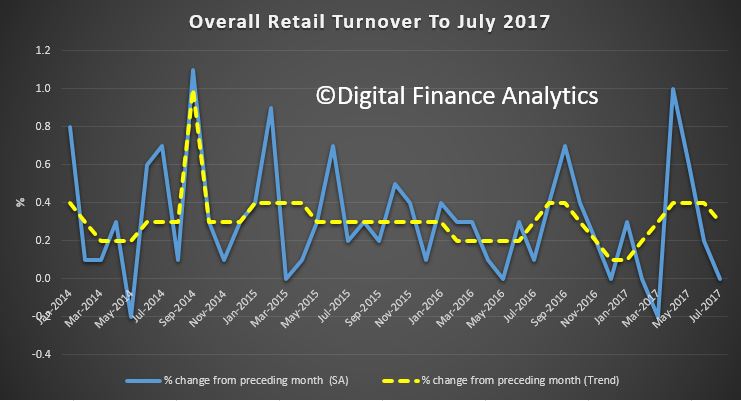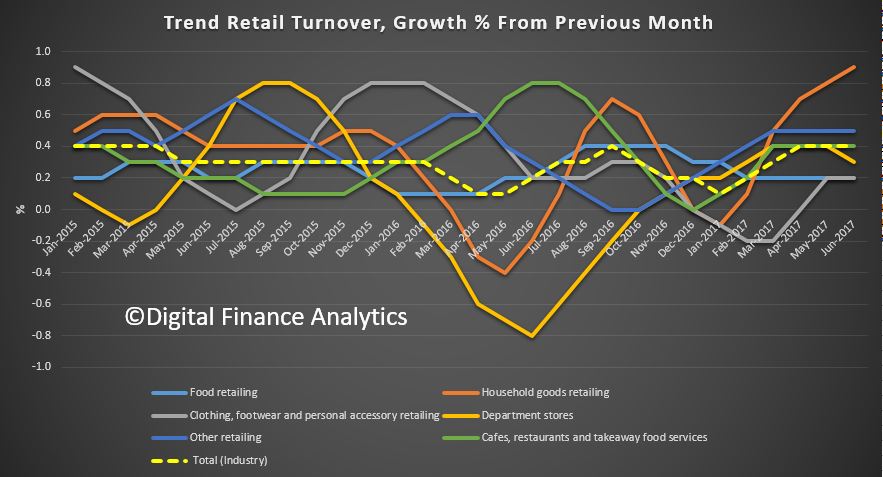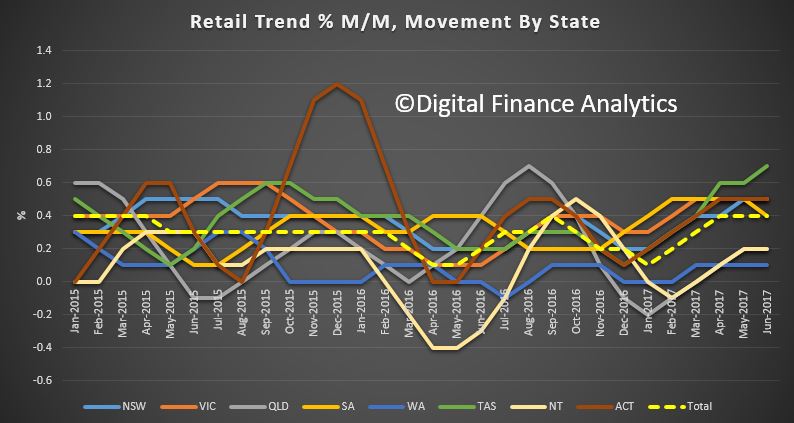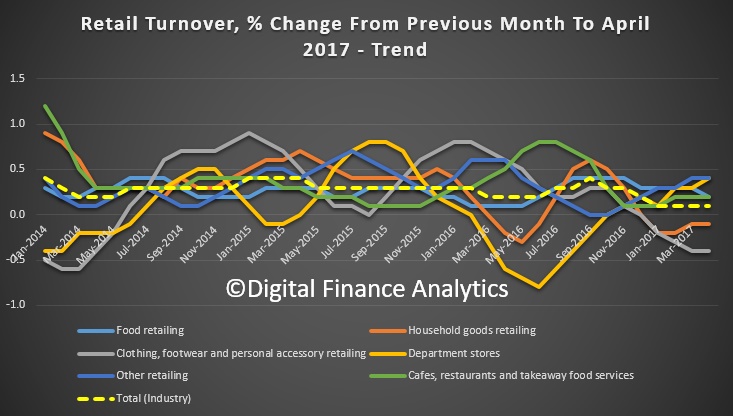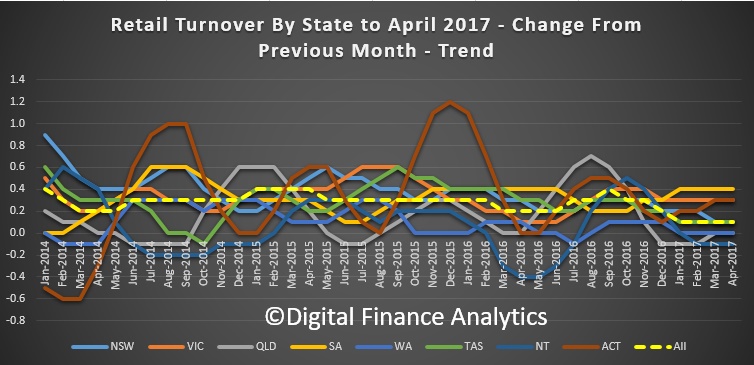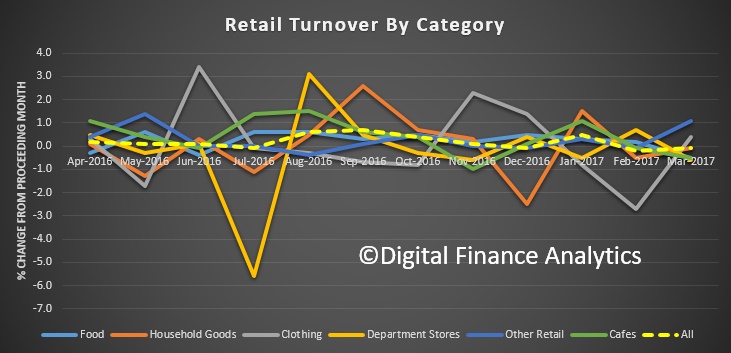Australian retail turnover fell 0.5 per cent in December 2017, seasonally adjusted, according to the latest Australian Bureau of Statistics (ABS) Retail Trade figures. This follows a 1.3 per cent rise in November 2017.
This is the headline which will get all the coverage, but the trend estimate rose 0.2 per cent in December 2017 following a rise of 0.2 per cent in November 2017. Compared to December 2016 the trend estimate rose 2.0 per cent. This is in line with average income growth.
We will continue to focus on the trend data, as this gives a clearer indication of underlying performance. Retail remains in the doldrums, no surprise given the pressure on households, as we discussed yesterday.
Across the states, trend movements from the previous month was 0.1% in NSW, 0.5% in VIC, 0.1% in QLD, 0.6% in SA, 0.0% in WA, 0.2% in TAS, -0.2% in NT and no change in the ACT.
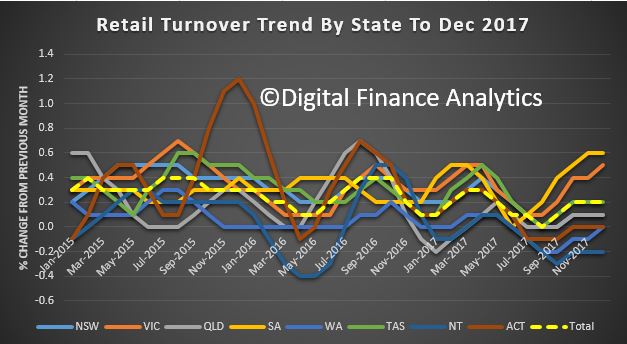 By category, in trend terms, food retailing rose 0.3%, household goods 0.2%, Clothing, footwear and personal accessories 0.5%, department stores 0.1%, other retailing -0.2% and cafes, restaurants and takeaway food 0.4%.
By category, in trend terms, food retailing rose 0.3%, household goods 0.2%, Clothing, footwear and personal accessories 0.5%, department stores 0.1%, other retailing -0.2% and cafes, restaurants and takeaway food 0.4%.

Online retail turnover contributed 4.8 per cent to total retail turnover in original terms in the December month 2017. In December 2016 online retail turnover contributed 3.8 per cent to total retail.
In seasonally adjusted volume terms, turnover rose 0.9 per cent in the December quarter 2017, following a rise of 0.1 per cent in the September quarter 2017. The rise in volumes was led by household goods (3.4 per cent), which benefitted from strong promotions and the release of the iPhone X in the November month.

